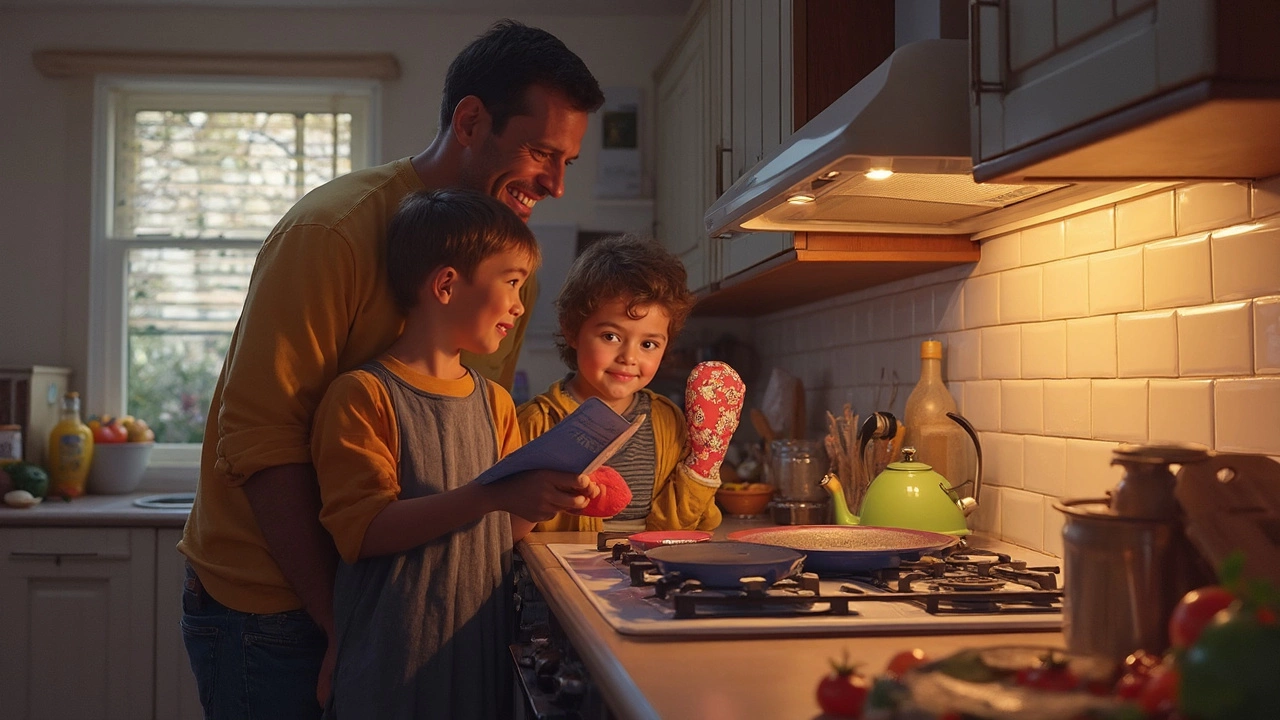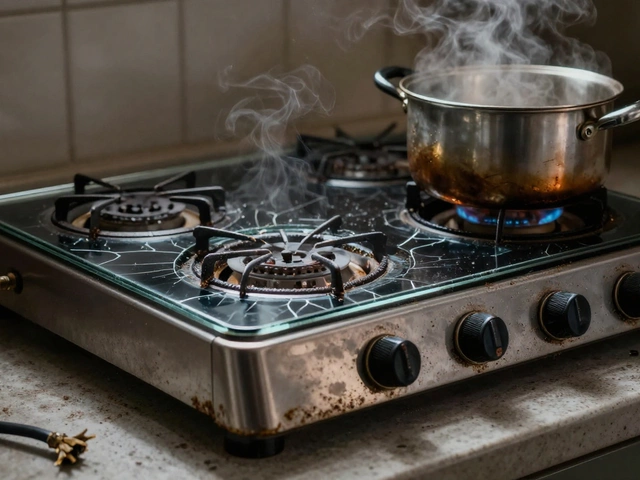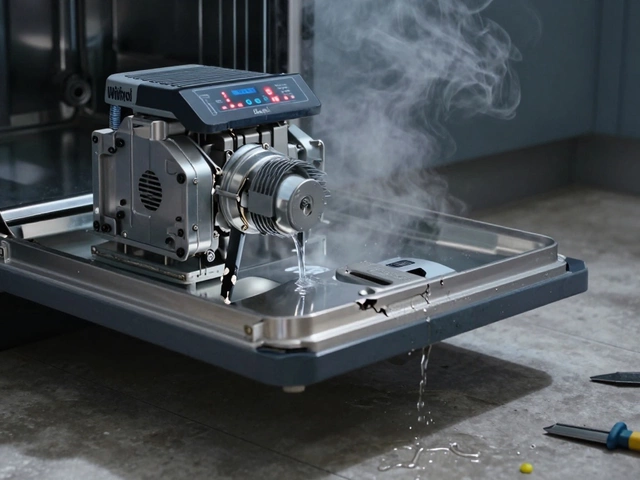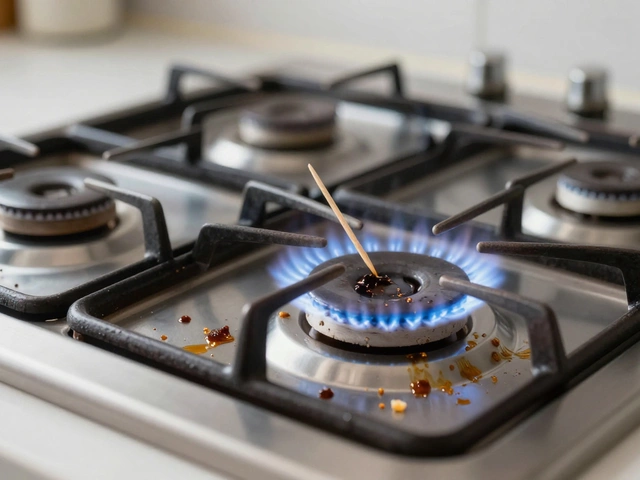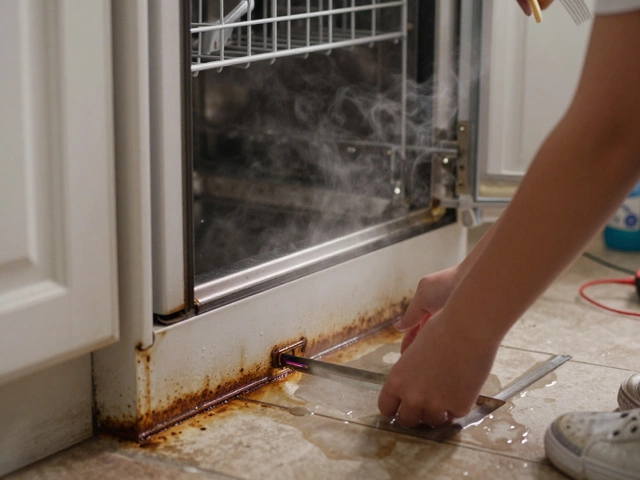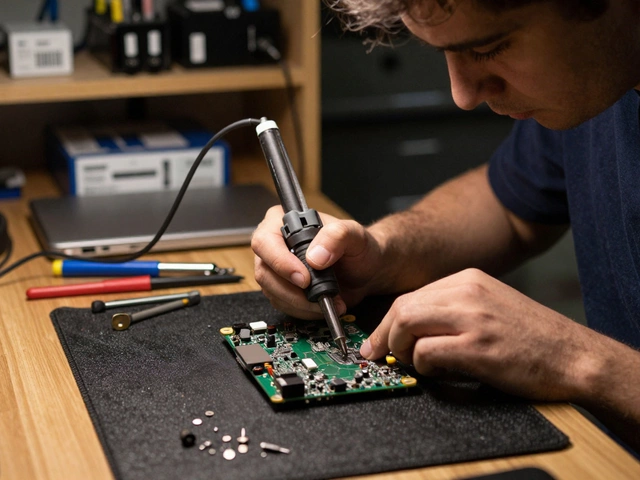You probably use your electric stove so often that you barely think about it—until something stops working. Out of all the possible issues, two problems pop up way more than the rest: burners that won’t heat and control panel glitches. Annoying, right? But here’s the good news: both problems have clear warning signs and some fixes you can actually try yourself.
Ever twist a burner knob and nothing happens? Or maybe you see the burner glow red but your food is still cold. It’s not just you. Faulty connections, worn-out elements, or old wiring can turn a top-performing stove into a brick. And don’t even get me started on digital displays that start acting up, refusing to listen to any button you push.
Knowing what to look for can save you a whole lot of time (and maybe even money). Whether you like to tinker or just want to know what to tell the repair guy, understanding these two issues puts you ahead of the game. Plus, I’ve thrown in some quick tips for keeping your stove working—and your dinner plans on track.
- Spotting the Usual Suspects
- When Burners Refuse to Heat Up
- Control Panel Headaches
- DIY Troubleshooting Steps
- When to Call in Help
- Smart Moves for Preventing Issues
Spotting the Usual Suspects
When it comes to electric stove problems, most issues start with just a few usual suspects. The biggest ones? Burners that don’t heat properly or control panels that decide to glitch out for no reason. Both can drive you up the wall, but they usually leave clues if you know what to look for.
Let’s get real—electric stove burners last anywhere from 5 to 15 years, but if you start noticing uneven heating, slow response, or that “all the burners are cold and it’s not even winter” moment, something’s up. It could be a burned-out element, a loose connection under the cooktop, or even a blown fuse in the stove. Control panels, especially the digital ones, can start acting up if there’s a power surge, moisture problem, or simple age catching up with it.
Spotting the early signs can save you from a last-minute pizza delivery. Here are some classic warning signs to keep an eye out for:
- Burners don’t get hot or take forever to heat up.
- Only half the burner works (like cooking on the edge of a volcano).
- The stove’s display is blank, flickers, or shows error codes (looking at you, random E1 messages).
- Buttons are unresponsive or knob dials turn extra loose.
- You hear weird popping or clicking sounds from inside the stove.
And here’s something you probably didn’t know: according to a 2023 consumer report, about 36% of electric stove service calls are for burners not heating, and around 22% are for unresponsive or malfunctioning control panels. That’s almost two-thirds of problems right there.
| Common Problem | Approx. % of Repair Calls |
|---|---|
| Burners Not Heating | 36% |
| Control Panel Issues | 22% |
| Other Electrical Issues | 12% |
| Broken Oven Door | 10% |
| Other (Misc.) | 20% |
If you notice something off, don’t just hope it fixes itself. Grab a flashlight and check your stove’s basics: is it plugged in, is the circuit breaker tripped, and do any cords look damaged? It’s always easier to deal with a small problem before it snowballs.
When Burners Refuse to Heat Up
A burner that stays cold is usually the number one reason people Google electric stove problems. If you’ve got a pan stubbornly sitting on a burner that won’t heat, you’re definitely not alone. According to appliance repair techs, up to 40% of service calls for electric stoves come from burners that just quit.
The most common causes? Worn-out heating elements, loose burner connections, and busted switches. For coil burners, those big, spiral-shaped coils eventually burn out or crack. For smooth glass-top stoves, the hidden elements can fail too, but they’re more of a pain to get at. Here’s a breakdown of what usually goes bad:
| Problem | Typical Cause | Quick Tip |
|---|---|---|
| Burner won’t heat at all | Bad element or loose connection | Try swapping with another same-size burner |
| Burner heats unevenly | Element is cracked or warped | Replace the element |
| Burner stays on high | Faulty infinite switch | Switch needs checking/replacement |
If you’ve got a removable coil, shut off power, then gently pull it out and inspect the prongs. Any rust, blackening, or wobble? That means trouble. Sometimes you can fix loose connections by bending prongs slightly with pliers so they fit tighter. If swapping a working burner for a non-working one doesn’t solve it, the problem is probably deeper inside—like a bad socket or internal wiring.
Glass tops are trickier, and honestly, this is where most DIYers back off. If you’re up for it, check the breaker panel to make sure power is steady. No luck? Time to look at the electronic controls, which often need tools or special parts. But before calling a pro, always unplug the stove or switch off the breaker—electric stoves pack a punch, even when turned off at the front.
A quick stat: Most electric stove elements last around 8-12 years with regular use. Cleaning those pans under your burners keeps grease from messing with electrical contacts and can help them last longer. If you find yourself buying replacement elements every couple of years, check for leaks or spills that could be speeding up wear and tear.
Control Panel Headaches
If your electric stove suddenly ignores button presses or flashes weird error codes, the culprit is usually the control panel. This part acts as the "brain" of your stove, telling burners when to turn on or off and running things like timers and temperature settings. When it freaks out, nothing works right—sometimes the burners won’t start, sometimes the oven won’t listen, and occasionally the whole thing just shuts down.
The most common causes? Spilled liquids, steam sneaking in behind the panel, or plain old wear and tear on the circuit board. Touchpad stoves are even more sensitive; liquids or even grease on your fingers can cause them to glitch out. And if your kitchen sees a lot of baking or frying, the combination of heat and moisture can slowly fry those sensitive electronics. That’s why stove makers warn you not to use too much water when cleaning near the controls.
Spotting control panel issues is usually pretty simple. Look for:
- Buttons that don’t respond, or need to be pressed extra hard
- Displays that flicker, disappear, or show error codes (like F1 or F3)
- Unusual beeping that won’t stop
- Burners or oven that don’t turn on despite several tries
A quick tip: Unplug your stove from the wall for a minute, then plug it back in. Sometimes a simple reset sorts out temporary electronic bugs. If that doesn’t work, there could be a real problem with the control board or wiring. Don’t tear into those circuits unless you know what you’re doing—these panels aren’t cheap and it’s easy to make things worse.
One more thing: If your stove is still under warranty, don’t open it up yourself. Call the manufacturer or an authorized repair tech to avoid voiding coverage. For everyone else, if you suspect a fried board or you see scorch marks behind the panel, that’s your cue to get professional help. Control panels are one of the most expensive replacement parts, making this one of the top electric stove problems to watch for if your stove is getting up there in years.
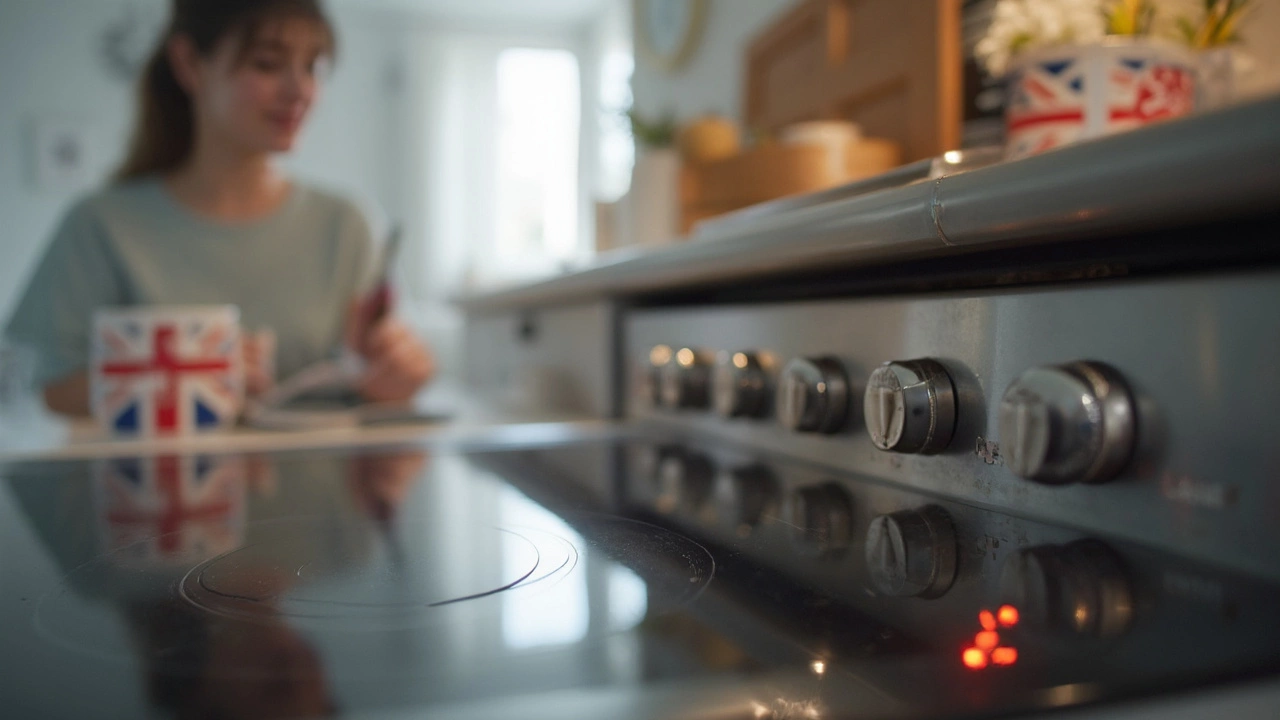
DIY Troubleshooting Steps
Before you call someone—or panic—try a few simple checks. Most electric stove problems really come down to two things: the burners not heating or the control panel acting up. Luckily, there are steps you can take to figure out what’s going wrong, and sometimes even solve it, without needing to touch your wallet.
First things first, safety is key. Unplug your stove or flip off the breaker before poking around inside. Burners and wiring can zap you if you’re not careful.
- Check the burner: Swap any burner that isn’t heating with one that’s working. If the swapped one works in the other spot, your problem is the original burner—not the socket or wiring.
- Inspect the socket: Look for signs of burning or corrosion where the burner plugs in. If it’s blackened or looks loose, that’s usually your culprit.
- Test continuity: If you have a cheap multimeter (they go for around $15), you can check if the burner or socket has continuity. No beep? Time for a replacement part.
- Control panel acting weird? Try a full reset. Unplug the stove, wait a couple of minutes, and plug it back in. Sometimes a good old power cycle is all it takes for digital panels to get their act together.
- Buttons on the digital panel stuck or not responding? Gently clean them with a damp (not wet) cloth. If you spot visible damage or cracks in the display, you’ll likely need a pro.
If you’re curious, it turns out about 65% of electric stove repairs could have been prevented or solved with a basic swap or reset. Here’s a quick look at common issues, percentage-wise:
| Problem Area | Percent of Stove Issues |
|---|---|
| Burner or Element Fails | 47% |
| Control Panel/Display Fails | 28% |
| Socket or Wiring Issue | 15% |
| Other/Unknown | 10% |
As appliance pro Emily Peavler puts it, “Most electric stove issues really come down to the basics—burners or digital controls. Nine times out of ten, checking connections and swapping parts does the trick.”
If you spot burned wires, loose connections, or anything that smells burnt, don’t try to MacGyver it back together—leave that for someone with more tools (and insurance). For regular breakdowns or if things just don’t look right, you’ll want a certified pro to step in.
Give these steps a shot before you drop cash on repairs. Even if you end up needing help, you’ll at least sound like you know your stuff when you make that call.
When to Call in Help
Some electric stove problems you can handle with a screwdriver and a YouTube video. But there’s a line, and it’s usually where electricity and tricky wiring come into play. If your stove is sparking, has a burning smell, or keeps tripping the circuit breaker, stop right there. This isn’t just annoying—it’s flat-out dangerous. Messing around with high-voltage components when you’re not sure what you’re doing can lead to shocks, fires, and a ruined stove.
One survey from the U.S. Consumer Product Safety Commission showed that kitchen appliances are involved in over 150,000 home fires every year—mostly from faulty wiring or improper DIY repairs. Sometimes it’s not worth the risk.
Here’s when you absolutely want to bring in a pro:
- The electric stove problems involve wiring, complicated electronics, or strange smells.
- Your burners still won’t heat after you’ve swapped them with working elements from other spots.
- The control panel is totally unresponsive, flickering, or acting like it has a mind of its own.
- You hear popping or see visible sparks when the stove is on.
- The stove is under warranty—and DIY fixes could mess that up.
To put things in perspective, here’s some quick data:
| Problem | Fixable by User? | Call in a Pro? |
|---|---|---|
| Burner not heating | Usually | If wiring is damaged |
| Control panel glitch | Sometimes (reset) | If display is dead or erratic |
| Sparking or burning odor | No | Always |
| Stove keeps tripping breaker | No | Always |
Don’t just take my word for it. Safety pros urge caution:
"Electric stoves carry enough voltage to cause serious injury or fire. Always disconnect power and call a trained technician if you’re unsure." — National Fire Protection Association
Basically, if your quick checks don’t fix it, or you’re even a little bit uneasy, that’s your sign to make the call. Saving a few bucks isn’t worth a trip to the ER—or worse, a total kitchen redo.
Smart Moves for Preventing Issues
Let’s be real—a little care goes a long way with electric stoves. Nobody wants a surprise when it’s dinner time. Here’s how you can avoid the two top problems: those stubborn burners and flaky control panels.
- Keep your stove clean. Spilled food, grease, and crumbs can sneak their way into burner connections and under knobs. Give your stove a wipe-down after each use, making sure the burners are fully cool first.
- Check the burners every few months. Pull them out (gently!) and look for signs of wear, discoloration, or loose fittings. Swap out any sketchy-looking elements before they totally quit on you.
- If you’ve got a glass cooktop, avoid dropping pots on it. Cracks can lead to trouble with the heating elements underneath.
- Don’t overload outlets. Plugging your electric stove into the wrong extension cord or sharing an outlet with too many gadgets can mess with the wiring fast.
- Give the control panel a quick inspection now and then. Sticky buttons? Weird display? A little rubbing alcohol on a soft cloth can kick the grime (but skip anything too wet—liquid and electronics don’t mix).
Most manuals (yep, the ones that always get lost in your junk drawer) actually have a section on what not to do. According to the U.S. Consumer Product Safety Commission, “Regular cleaning and inspection not only extend your appliance’s life, but also reduce the risk of electrical hazards.”
"Never use harsh chemicals or metal tools to clean your stove’s surfaces—they can cause permanent damage or even spark a fire risk." — Appliance Repair Institute
One more trick? If your home’s power is a little sketchy, try plugging your stove into a surge protector made for heavy appliances. Power spikes and brownouts are a well-known culprit for fried control panels. And if Rufus (my dog) is anything like yours, make sure pets can’t chew on cords or get behind the stove—random fur balls and nibbled wires are just asking for trouble.
